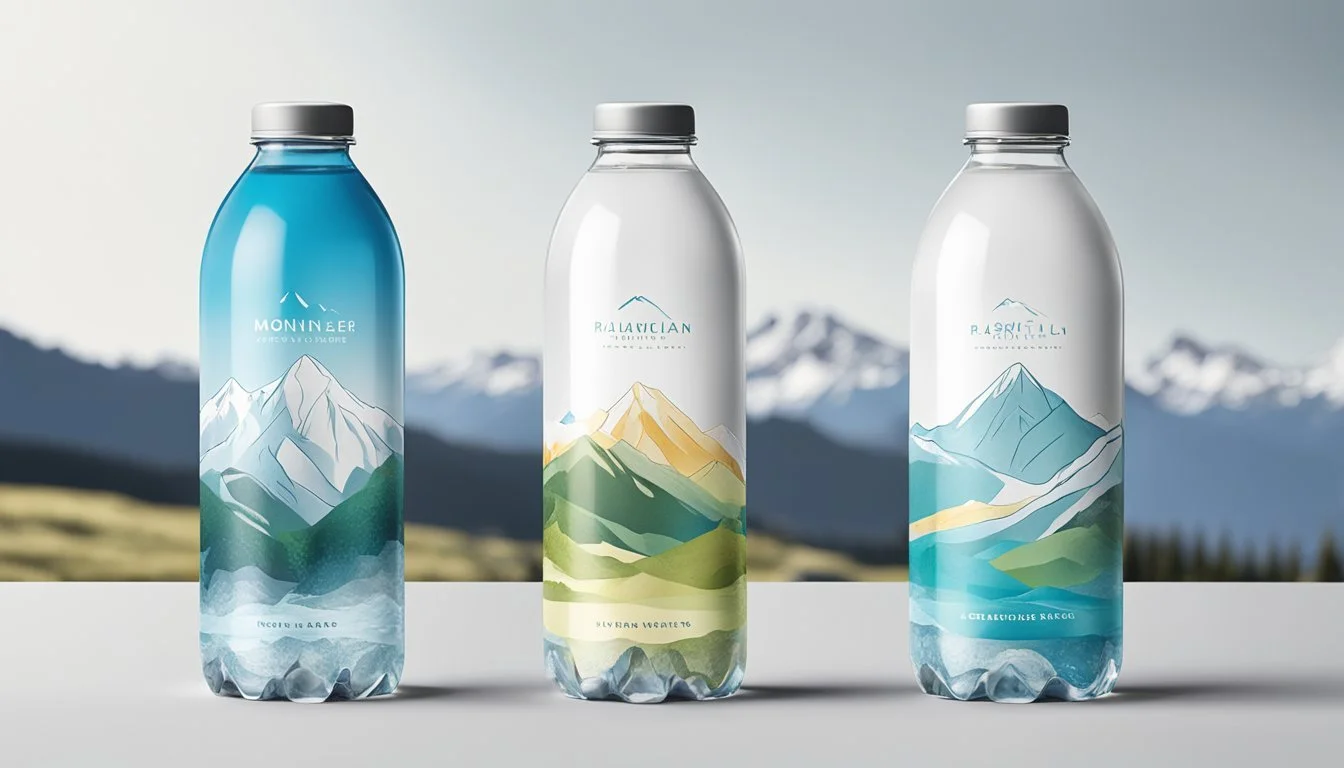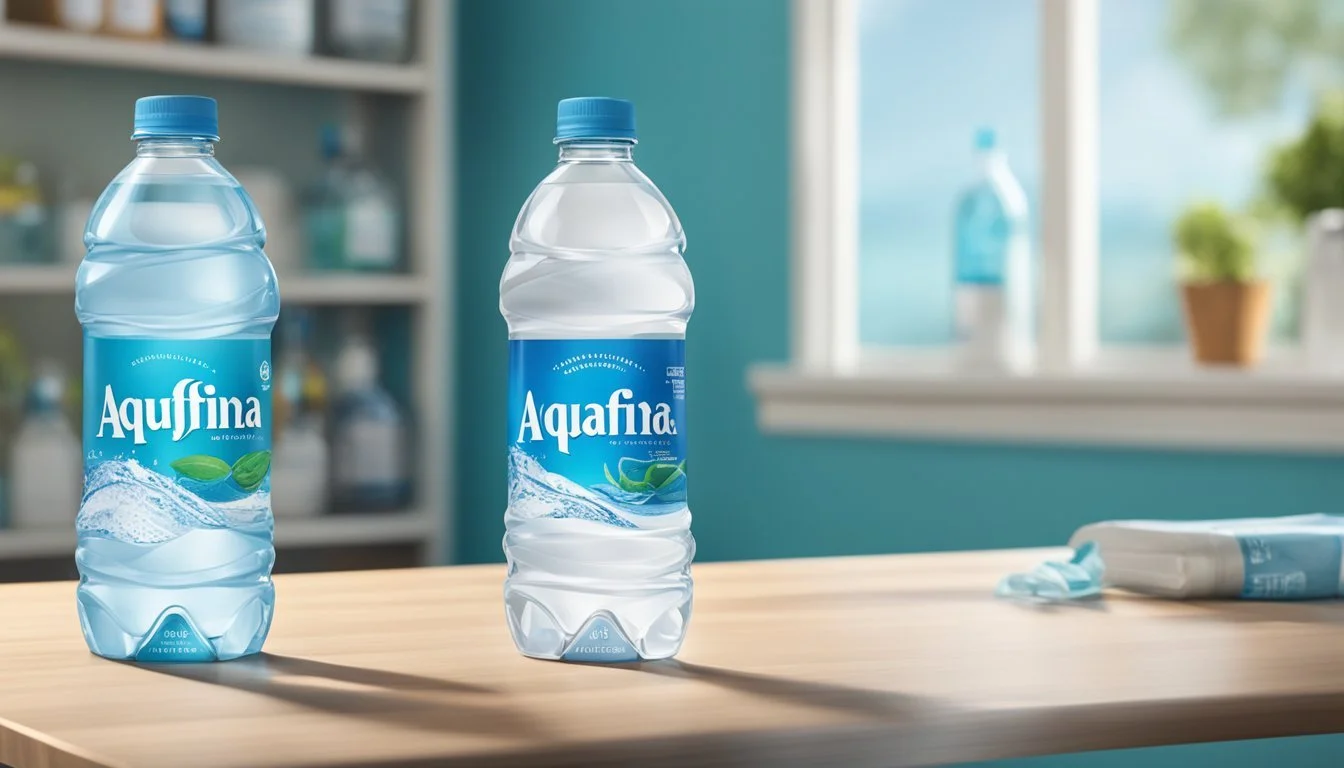Aquafina vs. Aqua Carpatica
Which Bottled Water is Better?
When choosing the best bottled water, consumers often face a tough decision between two popular brands: Aquafina and Aqua Carpatica. Aquafina, known for its rigorous HydRO-7 filtration process, offers purified water that claims to be free from the impurities found in many other bottled waters. In contrast, Aqua Carpatica prides itself on its naturally mineralized water, sourced from the Carpathian Mountains, which boasts a unique taste and mineral content.
Aquafina's popularity is partly due to its consistent quality and availability, making it a go-to choice for those seeking reliable hydration. Aqua Carpatica, on the other hand, appeals to health-conscious consumers who value natural mineral content and environmental sustainability. This makes it ideal for specific dietary needs or preferences, such as sodium-free options.
For those prioritizing pure, clean taste, Aquafina stands out with its advanced purification process. However, Aqua Carpatica's naturally mineral-rich profile offers a distinct and possibly more health-oriented choice. Both brands cater to different tastes and needs, setting the stage for a thoughtful comparison.
Understanding Bottled Water
Bottled water comes in various types and must meet stringent regulations to ensure its safety and quality. It's essential to understand these different types and the regulatory standards that govern them.
Types of Bottled Water
Purified Water: This type is the most processed, undergoing advanced filtration like reverse osmosis, distillation, or deionization to remove contaminants. Brands like Aquafina use a multi-step purification process to ensure high-quality water.
Spring Water: Sourced directly from natural springs, this water is often bottled at the source to maintain its natural mineral content. Aqua Carpatica, for example, emphasizes its naturally nitrate-free and low-sodium spring water, differentiating it from many competitors.
Mineral Water: Contains naturally occurring minerals that must be present at a minimum specified level. These minerals can contribute to the taste and potential health benefits. Regulations require that these waters come from protected underground sources.
Alkaline Water: Known for having a higher pH level, often above 8.0, which some believe can neutralize acid in the body. Brands like Essentia offer ionized alkaline water, which they claim has potential health advantages due to its basic pH.
Regulations and Standards
The FDA and the EPA regulate bottled water to ensure it meets safety standards. The FDA oversees bottled water as a food product, enforcing strict labeling and safety requirements.
The EPA sets standards for public drinking water, which can also impact bottled water quality.
Bottled water must meet microbiological, physical, chemical, and radiological standards.
Most notably, sources must be verified and consistently monitored to prevent contamination.
Quality assurance programs often include regular testing for common contaminants like nitrates, heavy metals, and microbial hazards. This ensures that the water remains safe for consumption across its shelf life.
Understanding these types and regulations helps consumers make informed choices about their bottled water preferences.
Breaking Down the Brands
Comparing Aquafina and Aqua Carpatica reveals significant differences in their source, filtration process, and overall quality. This insight will guide you to make an informed choice based on key attributes of each bottled water brand.
Aquafina's Profile
Aquafina, a PepsiCo product, is a popular purified water option known for its rigorous filtration process. The water undergoes a proprietary 7-step HydRO-7 process, aimed at removing contaminants and producing clean, crisp water. This purification method includes reverse osmosis and other filtering techniques.
Aquafina derives its water from public sources, such as municipal tap water, and extensively purifies it. The resulting water is free of minerals, contributing to its neutral taste. Its ubiquitous availability and consistency have made Aquafina a staple choice for many consumers.
Key Points:
Brand: Aquafina
Owner: PepsiCo
Type: Purified water
Process: 7-step HydRO-7 filtration
Source: Public sources
Taste: Neutral, clean
Aqua Carpatica's Profile
Aqua Carpatica is esteemed for its natural origin and high mineral content. Sourced from the Carpathian Mountains, this water is natural spring water rich in minerals like calcium and magnesium. This enhances its taste and offers health benefits not found in many other water brands.
Aqua Carpatica prides itself on purity, claiming to be nitrate-free, which is a significant health consideration. The water is naturally carbonated and offers a unique taste profile, appreciated by those who favor mineral-rich water. The brand positions itself as a premium option due to its natural source and health-benefitting properties.
Key Points:
Brand: Aqua Carpatica
Type: Natural spring water
Source: Carpathian Mountains
Mineral Content: High in calcium, magnesium
Purity: Nitrate-free
Taste: Mineral-rich, unique
Health and Hydration
Aquafina and Aqua Carpatica offer distinct experiences when it comes to the health and hydration benefits they provide through their unique mineral compositions and pH levels.
Mineral Content and Health Benefits
Aquafina is a purified bottled water that undergoes a rigorous purification process, which removes most minerals and impurities. This results in a water that lacks significant mineral content. While this ensures a clean taste, it also means that Aquafina does not provide the body with essential minerals like calcium, magnesium, or potassium.
Aqua Carpatica, on the other hand, is a natural mineral water sourced from the Carpathian Mountains. It contains beneficial minerals, which can support various bodily functions. For instance, calcium is essential for bone health, while magnesium plays a role in muscle function and energy production. Potassium helps regulate hydration and muscle contractions. This mineral-rich profile makes Aqua Carpatica a healthier option for those looking to supplement their diet with these nutrients.
Hydration and Electrolytes
Hydration is essential for maintaining bodily functions, and the pH level of water can affect how well it hydrates. Aquafina typically has a neutral to slightly acidic pH level, resulting from its purification process. This makes it suitable for regular hydration needs but does not provide any additional alkaline benefits.
Aqua Carpatica, with a higher natural pH level around 7.4 to 8.2, offers slight alkalinity. This can help neutralize acidity in the body and support better hydration. Additionally, the presence of natural electrolytes such as calcium and magnesium further enhances hydration by aiding in fluid balance and muscle function. Hence, Aqua Carpatica may provide more effective hydration, especially after physical activities.
Comparing Quality and Taste
Aquafina and Aqua Carpatica's quality and taste relate directly to their water sources and purification processes. They are both popular bottled water brands, enabling a deep dive into their unique characteristics and consumer preferences.
Water Source and Purity
Aquafina is sourced from public water supplies and undergoes a rigorous purification process. This includes reverse osmosis, ozonation, and UV sterilization, removing impurities and ensuring a high level of purity. The final product is a consistently clean and neutral-tasting water.
Aqua Carpatica, on the other hand, is naturally sourced from the Carpathian Mountains. It is renowned for its purity, containing negligible nitrates and low sodium levels. This spring water is bottled directly at the source with minimal processing to retain natural minerals and a pure, natural taste.
Brand Water Source Filtration Process Aquafina Public water supplies Reverse osmosis, UV sterilization, ozonation Aqua Carpatica Carpathian Mountains springs Minimal processing to maintain natural purity
Taste Test Insights
In taste tests, Aquafina is often described as having a crisp, clean flavor. Its purified nature means it has no distinct mineral taste, making it appealing for those who prefer a neutral water taste without any aftertaste. Aquafina’s consistency is a key factor in its widespread popularity.
Aqua Carpatica offers a different experience. The naturally sourced water has a subtle, mineral-rich flavor profile. This water taste is often praised for its refreshing and invigorating quality, enhancing the drinking experience without overwhelming the palate. Its natural purity contributes significantly to its taste.
Consumer preferences can vary, but Aqua Carpatica is typically favored by those who appreciate the distinct characteristics of natural spring water, while Aquafina is ideal for those who prefer a reliably clean and neutral taste.
Environmental Impact and Sustainability
Aquafina and Aqua Carpatica both claim to prioritize eco-friendly practices, but their strategies show key differences in packaging and water resource management.
Packaging and Recycling
Aquafina’s efforts center on enhancing the recyclability of its packaging. PepsiCo, the parent company, plans to make all product packaging recyclable, compostable, or biodegradable by 2025. Aquafina is already offering 12-ounce cans at food service outlets to reduce plastic usage.
Aqua Carpatica, in contrast, often uses glass bottles, which are highly recyclable and can be reused many times. Glass packaging generally has a lower environmental impact over its lifecycle compared to single-use plastic. This makes Aqua Carpatica an attractive choice for those prioritizing sustainable packaging.
Water Footprint and Conservation
Aquafina sources its water from public sources and purifies it in local facilities. The use of municipal water supplies involves significant energy and resources for purification through processes like reverse osmosis.
Aqua Carpatica sources its water from protected springs in Carpathian Mountains. This natural method reduces the energy required for treatment. Furthermore, groundwater management practices are employed to ensure long-term sustainability. By preserving natural resources, Aqua Carpatica demonstrates a stronger commitment to environmental stewardship.
In choosing between the two, consumers must weigh the sustainability of packaging and the ecological practices in water sourcing.
Marketplace and Consumer Choices
When choosing between Aquafina and Aqua Carpatica, consumers often consider factors like price and accessibility. These elements play a significant role in the decision-making process, alongside personal preferences for taste and purity.
Price Comparison
Aquafina is known for its affordability. It is often positioned as a value-for-money option among popular brands like Dasani and Nestlé Pure Life. In many grocery stores, shoppers can find Aquafina priced competitively, sometimes costing less than $1 per bottle, especially in multi-pack options.
Aqua Carpatica, being a premium brand, tends to be more expensive. Priced higher than Aquafina, it often sits alongside other premium brands like Evian and Fiji. A single bottle of Aqua Carpatica can cost upwards of $1.50 to $2, reflecting its origin from Romanian springs and marketed purity.
For budget-conscious consumers, Aquafina often presents a more financially viable option. Those willing to spend a bit more for perceived higher quality might lean towards Aqua Carpatica.
Availability and Convenience
Aquafina is widely available in numerous retail environments, making it a convenient choice for many consumers. Found in virtually every grocery store, convenience store, and even vending machines, Aquafina's ubiquity ensures that it can be easily purchased almost anywhere.
Aqua Carpatica, while accessible, is less ubiquitous than Aquafina. It is more commonly found in upscale grocery stores and health food markets. Online platforms like Amazon also stock Aqua Carpatica, which can be a convenient option for consumers who prefer shopping online.
In terms of sheer convenience, Aquafina's widespread availability makes it the more effortless choice for many. However, for those seeking premium bottled water and willing to go the extra mile, Aqua Carpatica remains an attractive alternative.






